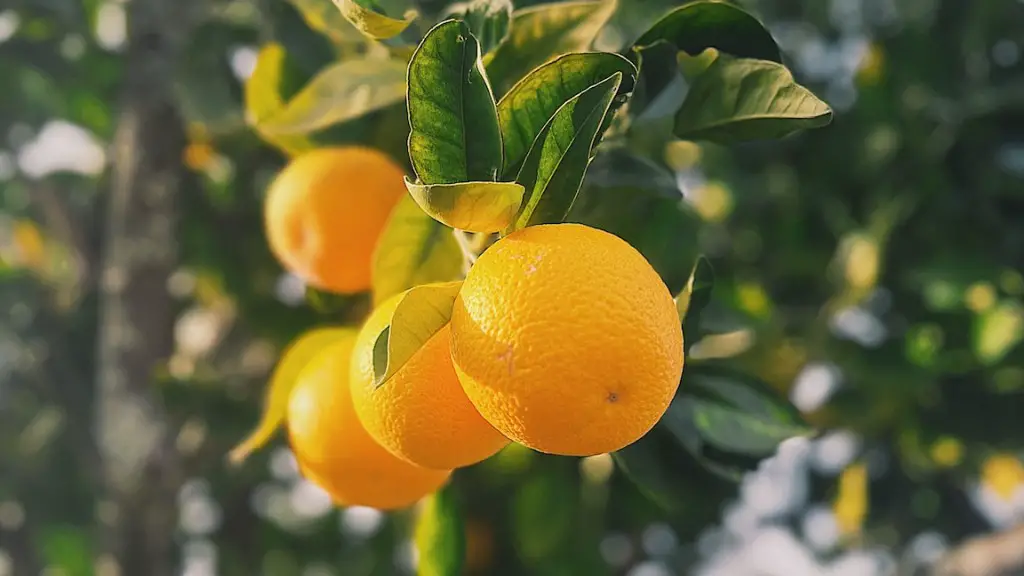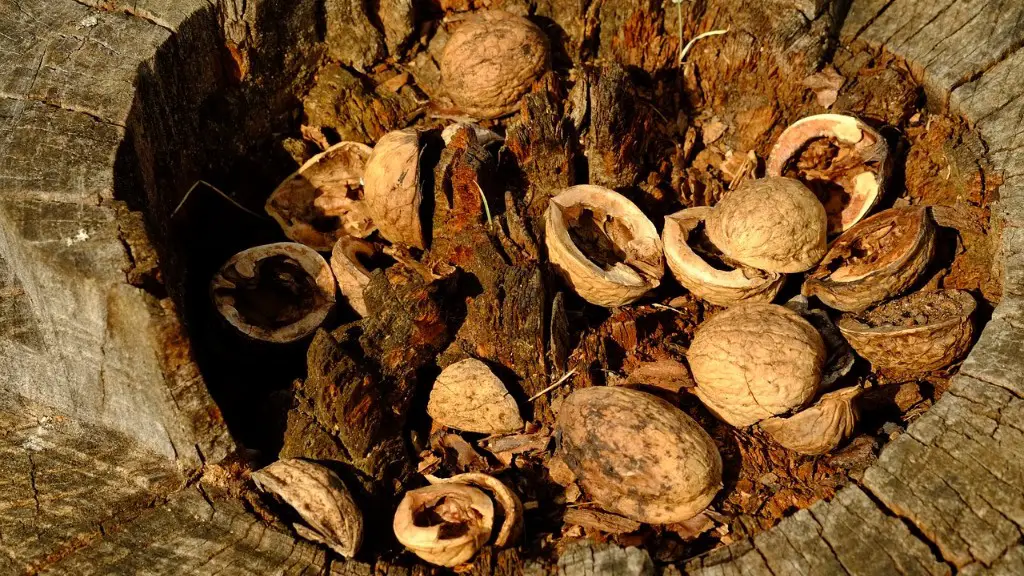It is commonly assumed that all trees remain as evergreens and do not change their foliage color during the seasons. Though, Lemon Trees are distinctive. Lemon Trees are not strictly classified as a evergreen or deciduous tree but rather as a semi-evergreen. Generally, the trees are evergreen in more delicate climates and deciduous in more extreme climates.
The semi-evergreen characteristics of a lemon tree can be attributed to the fact that lemons need a warm temperature that produce an amount of chill hours in winter less than 650. This flora will survive in temperatures as low as 28F, but it’s not when the chill hours necessary for its growth are achieved. If a lemon tree receives more chill hours than required it will shed some of its leaves like the evergreen tree.
Under optimal conditions, lemon trees can produce new growth throughout the year instead of shedding their leaves. When a lemon tree is not in such favorable circumstances, as described, it will drop its foliage during cold months. Knowing the climate of where you want to plant your lemon tree is essential because it will determine how much new growth the tree is able to produce.
As mentioned above, the more chill hours a location receives, the more deciduous the Lemon Tree may become. For instance, in Europe a lemon tree can become deciduous due to the cold temperatures. On the other hand in places like California, with warmer climates, they can remain as evergreens.
Moreover, Lemon Trees need plenty of sun and water. They will lose moisture during cold seasons so you have to make sure to water them often. It is also necessary to give them fertilizer to boost their growth and to help for them to remain with a solid foliage.
Overall, Lemon Trees are considered semi-evergreen, as they can stay evergreen under the right conditions such as plenty of sunlight and water, optimal temperatures and sufficient chill hours. Nevertheless, even if the conditions are not met in lieu of proper management they can hold most of their leaves or drop them according to the climate.
Fruit Bearing
Lemon trees produce white flowers that are both fragrant and attractive to pollinators, such as bees and butterflies. These flowers will likely turn into lemons within the same year; unless the lemon tree does not receive enough sunlight or the wrong amount of nutrients. If the weather is dry, you should make sure to water the tree as often as possible. This also helps keep the lemon tree from dropping its leaves or suffering from shock or frost damage.
Lemon trees are considered to be self-fertile, meaning one tree will bear fruits without the need of planting another tree near it. The lemons that they produce can be harvested in early summer, but if you live in a place with a more temperate climate the harvesting period can be in late spring. If you’re looking for more sweetness, let the lemons stay on the tree until they become bigger and turn yellow.
The fruits that lemons bear offer a wide variety of nutritional and allergy benefits such as Vitamin C and antioxidant, anti-inflammatory and anti-allergen properties and Lemon essential oils, among others. Lemon Zest, for example, is great for creating marinades for meats and fishes, and is a great option for making sandwiches and salad dressings. Lemon juice can also be used in juices, juices or teas and can help balance the acidity of the food.
The leaves of the lemon tree can be used in teas, tinctures and oils. In aromatherapy, the oils from the lemon tree are often used to invigorate the spirit and clear the mind. They are also known for their antimicrobial and antifungal properties. Even the flowers of the lemon tree can be used to make tea, tincture and to add flavor to drinks and desserts.
Culture and Care
When growing a lemon tree, the soil must be well drained and they prefer full sun. They can tolerate heat and can resist drought. They generally have a long lifespan and can survive for anywhere between five and seven years. It is important to note that, with time, the lemon tree will become less productive and you may need to replace it.
Lemon trees do not need much pruning and do not require a particular type of pruning to thrive. If pruning is needed, you should wait until March, as this is the best time to prune. When pruning, you should be very careful as the branches and wood are quite brittle and can break easily. Additionally, you should take care to not over-prune the crown of the tree as this can hinder its growth and affect the amount of fruit it can bear.
#Lemon trees require protection from the extreme temperatures, which is the primary reason they become deciduous. To keep the tree evergreen during winter, placing a frost cloth over the tree helps it to retain its leaves. Mulching around the root area will also help to retain moisture and add necessary nutrients. Depending on where you live, you may also need to protect it from pests, such as aphids, spider mites and scale. For that, you can either use natural products or specific pesticides that are specifically designed for lemon trees.
Finally, when it comes to the question of whether a lemon tree is evergreen or not depends on the location and the climate of where it’s planted. If it is located in a warm, dry location, it is likely to stay evergreen. Otherwise, it may become semi-evergreen and begin shedding its leaves in winter.
Harvesting
Knowing when to harvest your lemons is key; otherwise, they may become over-ripe and be wasted. Unripe lemons will still taste sour while ripe lemons will be sweeter and juicier. To determine when it is the right time to pick them, the lemon should change its color to yellow, feel heavier on the branch, start to develop its aroma and the skin will become thin and more delicate.
You should avoid harvesting lemons when the branch is wet as the alkaloid content may be too high. Also, when harvesting the lemons try to twist them in an upward direction to ensure that the fruit remains connected to the tree. This helps prevent infection from entering the tree as a result of a broken stem. Harvesting with a sharp pair of scissors or clippers is also recommended to avoid bruising or damaging the skin of the lemon.
Once the lemon is harvested, it needs to be stored correctly to last longer and preserve its flavor. The best way to store the lemons is to keep them in the fridge, in a paper bag or a sealed container for up to one week. If the lemons are not going to be used immediately, they should be kept in a cool, dry place away from sunlight. This will help them to last longer and retain their freshness and flavor.
Finally, it is important to keep in mind that fruit will continue ripening once it is picked from the tree. So it’s best to pick them when they are yellow-green to ensure that they retain the best flavor when consumed.
Nutrition
Lemons are full of nutrients, which can provide numerous health benefits to those who include them in their diet. Some of the most important nutrients they contain are vitamin C, magnesium, copper, iron, calcium and potassium. Vitamin C helps protect the body against infection, while magnesium helps lower blood pressure and copper helps maintain healthy bones. Additionally, lemons contain powerful antioxidants that can help protect the body from free radicals.
Lemons also contain many organic compounds, such as terpenes, that can help reduce inflammation and can also help improve digestion and metabolism. They are also a great source of prebiotics, which can help improve the balance of good bacteria in the gut. Lastly, lemons have been known to have antiviral, anticancer and immune-boosting properties.
When consuming lemons, it is important to note that the skin of the lemon, or the rind, contains the most vitamin C; however, the juice also contains a significant amount of vitamin C as well. Additionally, the lemon peel can be used to make tea, which can help soothe a sore throat and provide calming benefits, as well as to make zest, which can be used in baking.
Lemon water, or the juice of half a lemon in a glass of water, has been known to do wonders for the body. It can help you stay hydrated and provide numerous health benefits, such as aiding in digestion, improving skin complexion, helping fight off infection and boosting energy levels. It has also been said to promote weight loss, help with cravings and reduce inflammation.
Conclusion
The Lemon Tree is a unique one in that it is broadly classified as a semi-evergreen. Thus, it falls into in-between deciduous and evergreen, with its foliage retention dependent upon climate, sunlight and chill hours. The tree bears an abundance of fruit which is high in vitamins, minerals and antioxidants, with the rind providing a plethora of benefits when used in teas, tinctures and oils. As far as its culture and care, the tree requires full sun, good drainage and protection from extreme temperatures. With regards to harvesting, it requires thought and care to ensure that the lemons are picked at the correct time, as well as stored correctly, so as not to lose their flavor or nutrition.



